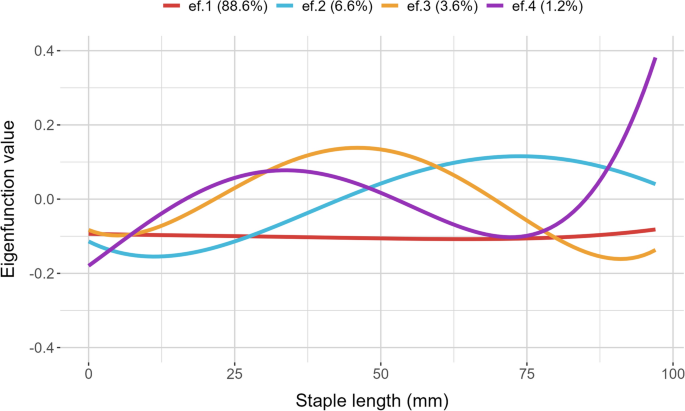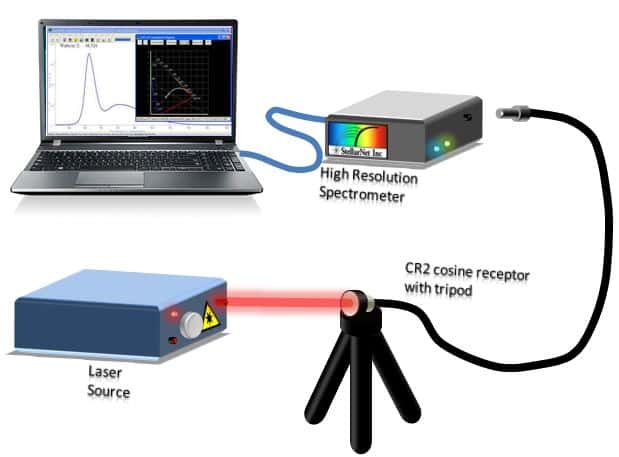High-Performance Optical Fibre Diameter Analyser for Demanding Applications
Optimize Your Fibre Optic Performance: Understanding Optical Fiber Size Analyser Innovation
The performance of fibre optic systems is critically influenced by the precision of their size, a variable typically ignored in the pursuit of ideal signal honesty. Understanding the technology behind optical fibre size analysers reveals the intricate equilibrium in between dimension accuracy and manufacturing high quality. These gadgets not only boost compliance with market standards yet likewise offer real-time insights that can preemptively resolve prospective issues. The ramifications of their usage expand beyond plain measurement; they can essentially change the landscape of fiber optic performance. What variables should one think about to harness their complete potential?
Relevance of Optical Fiber Size
The diameter of optical fiber plays an important role in identifying the efficiency and efficiency of communication systems. Conversely, smaller sized diameters often tend to support fewer settings, which can enhance signal clearness and minimize crosstalk.

Furthermore, understanding the size's effects can bring about set you back savings by lowering the demand for signal boosting and repeaters in substantial networks (optical fibre diameter analyser). To conclude, the significance of optical fiber diameter can not be overemphasized, as it straight impacts the overall efficiency and integrity of modern interaction systems

Exactly How Diameter Impacts Signal Quality
Signal high quality in optical fibre systems hinges substantially on the size of the fiber. A smaller sized diameter can lead to higher depletion rates, resulting in signal loss as light journeys via the fibre.
On the other hand, larger diameters generally enable boosted light capture and decreased modal diffusion, enhancing signal clearness. In multimode fibers, a larger core diameter can support several light settings, but it may likewise present intermodal dispersion, which can degrade signal top quality. Choosing the ideal fibre size is essential for accomplishing the preferred efficiency in details applications.
Furthermore, the interaction between the fibre size and the wavelength of the light used plays a critical role in determining the efficient transmission distance and total signal integrity. Therefore, comprehending how fibre diameter affects signal quality is essential for network designers and designers making every effort to enhance optical fiber systems for reputable, high-speed information transmission.
Review of Diameter Analyser Innovation
In many optical fiber manufacturing procedures, precise dimension of fibre size is important for ensuring regular efficiency and quality (optical fibre diameter analyser). Diameter analysers are sophisticated instruments developed to examine the physical dimensions of optical fibers with high accuracy. They utilize innovative optical and laser technologies to measure the size, ovality, and concentricity of the fiber, hence offering crucial information for quality assurance
These analysers can run in-line throughout the manufacturing procedure or as component of off-line screening procedures. In-line systems check that enable real-time surveillance, enabling producers to readjust parameters right away, consequently keeping optimum manufacturing conditions. Off-line analysers, on the other hand, offer thorough evaluations of sets, making certain that any kind of variances from defined tolerances are identified and attended to.
Size analysers significantly contribute to the decrease of defects in optical fibres, boosting overall product integrity. By continually determining vital criteria, these modern technologies promote compliance with sector requirements and specs. As the demand for high-performance optical fibres continues to rise, the function of size analysers ends up being progressively vital in accomplishing the wanted quality and performance standards in fibre optic systems.
Trick Attributes of Fiber Diameter Analysers
Although different designs of fibre diameter analysers exist, they generally share numerous key attributes that enhance their performance and dependability. Among the most substantial attributes is high-resolution measurement capabilities, which ensure exact size readings, vital for maintaining quality assurance in fibre production. Additionally, numerous analysers include innovative optical sensors developed to identify minute variations in fibre size, hence giving important information for Go Here procedure optimization.
One more important attribute is real-time surveillance, allowing operators to obtain instant feedback on fiber size throughout the manufacturing process (optical fibre diameter analyser). This ability facilitates quick adjustments and reduces the likelihood of flaws. Many analysers additionally come equipped with straightforward user interfaces, making it possible for operators to easily navigate with information and settings outcomes
Moreover, robust data storage and analysis performances are necessary see this website for tracking historical performance trends and making certain compliance with market standards. These functions jointly contribute to the efficiency of fiber diameter analysers in maximizing fibre optic efficiency.
Ideal Practices for Fiber Optimization

First, regular calibration of optical fiber size analysers is necessary. This guarantees exact dimensions and decreases possible discrepancies that might influence efficiency. Next off, maintaining a tidy workplace is vital; dust and contaminants can lead to indicate degradation.
Additionally, it is very important to pick fibres that satisfy particular application demands. This entails assessing elements such as attenuation, data transfer, and ecological conditions. Proper installation techniques must additionally be complied with, including preventing sharp bends and extreme tension, which can jeopardize fiber integrity.
Additionally, utilizing innovative tracking systems can help with real-time efficiency analyses, enabling prompt identification of concerns. Routine screening and upkeep must be carried out to make sure that fibers remain within ideal functional specifications.
Lastly, training employees on the most up to date fibre optimization technologies and approaches will certainly enhance their capacity to implement reliable techniques. By adhering to these best techniques, organizations can considerably boost the performance and life expectancy of their optical fiber systems, guaranteeing reliable communication and information transfer.
Final Thought
To conclude, the integration of optical fiber size analyser modern technology is crucial for making best use of fiber optic performance. By making certain specific dimensions of fibre measurements, these analysers considerably boost signal top quality and minimize losses throughout information transmission. Routine calibration and maintenance of the analysers are vital to maintain ideal efficiency and compliance with market standards. Inevitably, the application of this technology facilitates improved information transmission rates and reinforces signal honesty, contributing to the overall effectiveness of fiber optic systems.
Signal high quality in optical fiber systems pivots substantially on the size of the fiber.In numerous optical fiber production processes, accurate measurement of fibre diameter is important for making certain constant efficiency and high quality. As the demand for high-performance optical fibers proceeds to climb, the duty of diameter analysers ends up being significantly essential in accomplishing the preferred high quality and efficiency standards in fiber optic systems.
These functions collectively add to the efficiency of fiber size analysers in enhancing fiber optic performance.
In conclusion, the assimilation of optical fiber size analyser technology is critical for making the most of fiber optic performance.